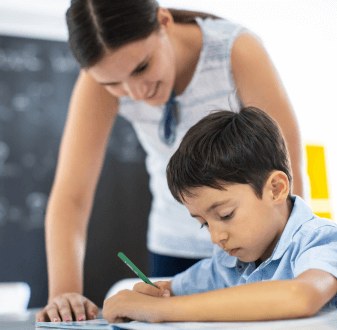It seems like every day someone is making another big claim about how technology is going to reshape society.
On the one hand, it’s clear that this is sometimes true. Social media has drastically changed the way people communicate, for example. However, when it comes to education, new technologies don’t always deliver on their big promises.
Is technology in the classroom helpful or distracting?
There’s no simple answer, because just like any other tool – it can be both. Even Bill Gates admits it’s not enough to give just students a new device, and hope that somehow it causes a learning revolution. It’s about how and why you use it. Actually, all the research shows that the most important factor when it comes to innovation is you, the teacher. It’s up to educators to figure out how to utilise technology so that it’s delivering results.
Here are some pros and cons you should consider when thinking about introducing new technologies into your classroom.
The Pros
Teaching digital literacy is important, too
As a teacher, your responsibility is to ensure that your kids are as prepared for the world as they can be, and the future will be in the cloud. Whole economies are already reshaping themselves around data, social media and digital currency.
It’s never been more important to help your students understand and navigate the online landscape. Comparing reliable versus unreliable online media could be a great way to teach digital literacy and reading at the same time.
Creative and engaging ways of learning
Educational software and games have been around since the 80s, but these days, they’re becoming increasingly sophisticated. Take the Duolingo app, for example. It’s fun, has great graphics and sound effects, and uses a combination of ‘level ups’ and scores to motivate you to do better. It blends learning and entertainment, and that’s the key to its success. Teachers are introducing it into language classes already.
They say the future will be the virtual reality – but at present, there’s a range of digital options that encourage kids to actively engage in their own learning. There are video games supporting kids with disabilities and augmented reality apps bringing subjects like chemistry and anatomy to life.
Access to the cloud and online learning
The internet can be a school in itself, for anyone who is taught how to use it. There’s no piece of information you can’t find, in any kind of multi-media format. It’s got everything from Ted Talks to podcasts, books, lessons, online forums, articles, ‘MOOCs’, quizzes and how-to videos on YouTube.
As an educator, you have an amazing opportunity to curate and introduce these resources. By doing so, you’re teaching your students to be independent learners for life.
Plus, you can join online forums or participate in global education programs like EcoSchools, and encourage your students to start thinking globally. And of course, with cloud computing, students can now access their own database from anywhere. Online collaboration tools, such as Google Apps, mean students can work together at a distance, in real time. Online learning is becoming easier, and more effective.
The Cons
Addiction to smartphones
Teenagers now have more screens in their lives than any other previous generation, and 40% of them admit to being ‘smartphone addicts’. As a result, younger generations have shorter attention spans, and many report feelings of anxiety when unable to check their social media feed. A recent study in America found that distracted students can spend as much as 20% of class time on their phones doing unrelated tasks. Schools are increasingly banning smartphone use, and some research is showing that’s not necessarily a bad idea.
In the UK, researchers found that banning mobile phones in the class led to better academic results.
Cost
Technology is still expensive. Integrating it into schooling only works as long as everyone can access the same technology otherwise, it can just exacerbate social inequality. If you’re using apps, programs or watching media, make sure it can be accessed from the library or other school resources.
Cyberbullying
Unfortunately, bullying and social pressure have always existed in schools. However, social media is turning it into something that students can’t escape, even in their own bedroom. Cyberbullying is on the rise, and schools everywhere are looking for different ways to deal with it.
Lately, all forms of social media are coming under the spotlight, for a range of negative psychological impacts. The overuse of Facebook, Instagram, YouTube and Twitter has recently found to be linked to depression, body issues, anxiety and sleeplessness among children and young people. It’s something to consider while you decide how open your classroom is going to be for smartphones and social media use.
Learn how to become an expert at bringing innovation into education.
Find out more about studying a Masters in Education (Innovation and Change) or a Graduate Certificate of Education (Innovation and Change) at Torrens University.



